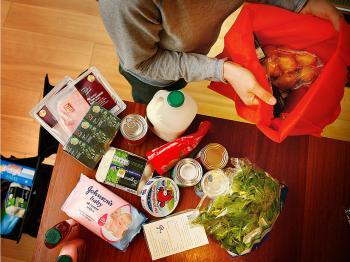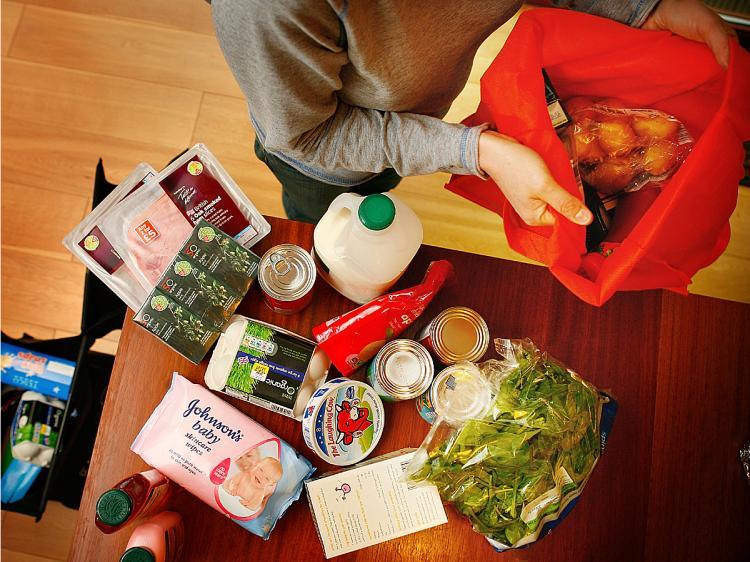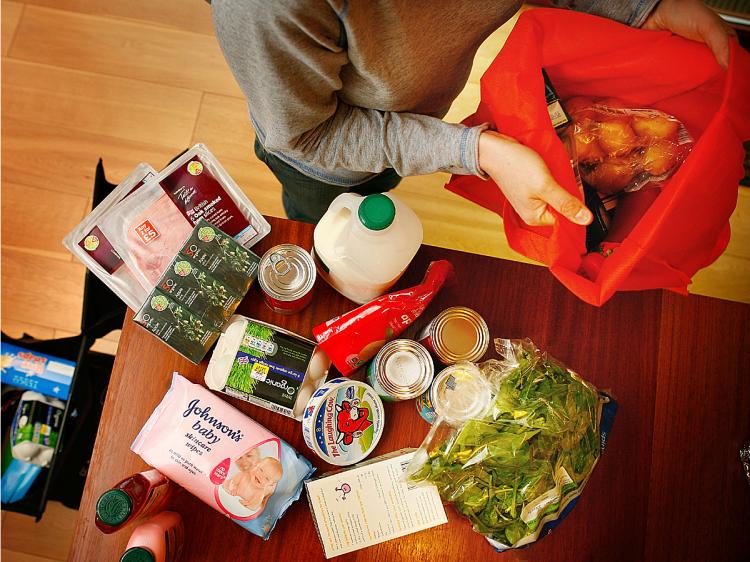You’re at the grocery store, doing the weekly shopping, and you come to that crossroad in the shopping experience: Brand A is what you want, but Brand B costs less, if you buy it using your grocery club card. If you’re like many shoppers these days, you decide on Brand B; in fact, you’ve already formed the habit of buying on-sale items posted with club-card prices.
These programs have become well-established over the last decade, and known by the marketing term loyalty cards or loyalty programs. They provide discounts to shoppers for certain products at different opportunities, and the technology can bring benefit to both retailer and shopper alike.
So, what are the advantages and disadvantages of loyalty programs for both consumers and retailers?
The moment you sign up for that grocery card (or other retailer card), a profile is created for you and follows your purchase history, gathering and accumulating data. Over time, this profile presents the retailer with many factors about you, including what types of produce, meat, and other fresh foods you consume, packaged foods, and brands you buy, toiletries and accessories, and so on.
As you check out and swipe the loyalty card, the benefits are immediate—with discounts applied to items purchased—and even custom coupons printed on the backs of receipts, providing incentives for you to return for the next purchase.
Some stores, like Safeway, also include other rewards programs—like accrued discounts toward gasoline purchases—or participation in the Upromise college tuition program, which partners with retailers to allow consumers to earn college tuition contributions while making purchases.
For retailers, a picture is formed of what types of goods are being sold locally and regionally, and helps them identify and manage inventory, buying trends, seasonal/regional products, etc.
In a nutshell, it provides the retailer with a detailed view of his customer’s buying habits and tastes, and to use such data to develop marketing strategies, and address customer needs.
For privacy-conscience consumers, a customer can often easily apply for a grocery card under a fictitious name, or not be required to present ID when applying. On the surface, this even keeps the purchase history private.
One grass-roots organization, Consumers Against Supermarket Privacy Invasion and Numbering (CASPIAN), reports of the practice whereby supermarket chains raise the price of goods sold to help cover loyalty program costs and reflect a bigger discount for elite shoppers and card holders.
On its website, the group points to market research showing that the “real goal is to identify and reward that elite 30 percent” of loyal shoppers, and that product selection in these stores will gradually be tailored to meet the needs of these consumers, referred to as “segmentation.”
The fear is that the present two-tiered system will develop into three or more tiers, providing better and better discounts for big spenders, while passing on the cost to fund such a system to regular, non-card-carrying shoppers, or even other less-discounted tiers. In this case, the discount is directly tied to the overall amount of money spent in the store—whether you applied with a fictitious name or not.
Some critics have expressed fear over the collection of loyalty card data and its unforeseen connection to not just corporate marketing, but future governmental programs and institutions. For instance, if a doctor providing government health care has access to a list of what you consume, and also knows what foods are unhealthy for you, this information could be used to monitor you as a patient, or even charge more for benefits based on what is known of your lifestyle.
But this “Big Brother” element has also been used for the benefit of consumers. In May of 2009, a supermarket chain in the northeast, Price Chopper, used purchasing data to inform approximately 900 customers that the Carambola (Starfruit) they purchased was being recalled due to possible contamination.
The Center for Disease Control (CDC) recently used loyalty card data to track down a salmonella outbreak. As reported by the Associated Press (AP) in March, the CDC was investigating a multistate salmonella outbreak that they suspected was caused by an Italian meat product. After obtaining permission to examine loyalty card purchases from sickened customers, CDC investigators identified the specific manufacturer and tainted product.
Whether you’re enjoying a discount or concerned about privacy, loyalty cards are well-established.
Consumers Against Supermarket Privacy Invasion and Numbering: http://www.nocards.org/
Food Merchants Perspective: http://www.fmi.org/
Colloquy is a quarterly aimed at loyalty marketers, and gives you an insight into the thinking of those who market this way: http://www.colloquy.com/default.asp
These programs have become well-established over the last decade, and known by the marketing term loyalty cards or loyalty programs. They provide discounts to shoppers for certain products at different opportunities, and the technology can bring benefit to both retailer and shopper alike.
So, what are the advantages and disadvantages of loyalty programs for both consumers and retailers?
The moment you sign up for that grocery card (or other retailer card), a profile is created for you and follows your purchase history, gathering and accumulating data. Over time, this profile presents the retailer with many factors about you, including what types of produce, meat, and other fresh foods you consume, packaged foods, and brands you buy, toiletries and accessories, and so on.
As you check out and swipe the loyalty card, the benefits are immediate—with discounts applied to items purchased—and even custom coupons printed on the backs of receipts, providing incentives for you to return for the next purchase.
Some stores, like Safeway, also include other rewards programs—like accrued discounts toward gasoline purchases—or participation in the Upromise college tuition program, which partners with retailers to allow consumers to earn college tuition contributions while making purchases.
For retailers, a picture is formed of what types of goods are being sold locally and regionally, and helps them identify and manage inventory, buying trends, seasonal/regional products, etc.
In a nutshell, it provides the retailer with a detailed view of his customer’s buying habits and tastes, and to use such data to develop marketing strategies, and address customer needs.
Consumer Concerns
For privacy-conscience consumers, a customer can often easily apply for a grocery card under a fictitious name, or not be required to present ID when applying. On the surface, this even keeps the purchase history private.
One grass-roots organization, Consumers Against Supermarket Privacy Invasion and Numbering (CASPIAN), reports of the practice whereby supermarket chains raise the price of goods sold to help cover loyalty program costs and reflect a bigger discount for elite shoppers and card holders.
On its website, the group points to market research showing that the “real goal is to identify and reward that elite 30 percent” of loyal shoppers, and that product selection in these stores will gradually be tailored to meet the needs of these consumers, referred to as “segmentation.”
The fear is that the present two-tiered system will develop into three or more tiers, providing better and better discounts for big spenders, while passing on the cost to fund such a system to regular, non-card-carrying shoppers, or even other less-discounted tiers. In this case, the discount is directly tied to the overall amount of money spent in the store—whether you applied with a fictitious name or not.
Some critics have expressed fear over the collection of loyalty card data and its unforeseen connection to not just corporate marketing, but future governmental programs and institutions. For instance, if a doctor providing government health care has access to a list of what you consume, and also knows what foods are unhealthy for you, this information could be used to monitor you as a patient, or even charge more for benefits based on what is known of your lifestyle.
But this “Big Brother” element has also been used for the benefit of consumers. In May of 2009, a supermarket chain in the northeast, Price Chopper, used purchasing data to inform approximately 900 customers that the Carambola (Starfruit) they purchased was being recalled due to possible contamination.
The Center for Disease Control (CDC) recently used loyalty card data to track down a salmonella outbreak. As reported by the Associated Press (AP) in March, the CDC was investigating a multistate salmonella outbreak that they suspected was caused by an Italian meat product. After obtaining permission to examine loyalty card purchases from sickened customers, CDC investigators identified the specific manufacturer and tainted product.
Whether you’re enjoying a discount or concerned about privacy, loyalty cards are well-established.
Consumers Against Supermarket Privacy Invasion and Numbering: http://www.nocards.org/
Food Merchants Perspective: http://www.fmi.org/
Colloquy is a quarterly aimed at loyalty marketers, and gives you an insight into the thinking of those who market this way: http://www.colloquy.com/default.asp






